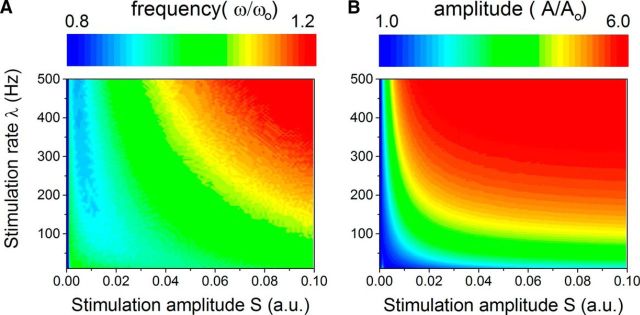Figure 6.
Network peak frequency and amplitude with respect to stimuli statistics. A, Normalized peak frequency, defined as the ratio of the network oscillation frequency with and without inputs (ω/ωo) as a function of the input rate λ and amplitude S. If the input has a low amplitude but a high frequency, deceleration of network oscillations can be observed. In contrast, strong stimulation accelerates network synchronous oscillations. The modulation ranges from 0.8 to 1.2 for the range of parameters explored here (which means that the response frequency can vary here from 8 to 12 Hz solely due to the action of inputs), implying that frequency shifts spanning 20% of the baseline frequency can be observed. B, Normalized amplitude of network oscillations (A/Ao) as a function of input parameters. Here, the effect is monotonic: input intensity and/or rate amplify network oscillation amplitude (i.e., power). Together, these results show that fluctuating, dynamic inputs, with time-varying rates and amplitudes as shown here, should be viewed as trajectories in the (S, λ) plane, and where frequency and power expressed by the systems fluctuates concomitantly. Note that for all points for which S = 0 or λ = 0, the normalized frequency and amplitude are equal to 1.

